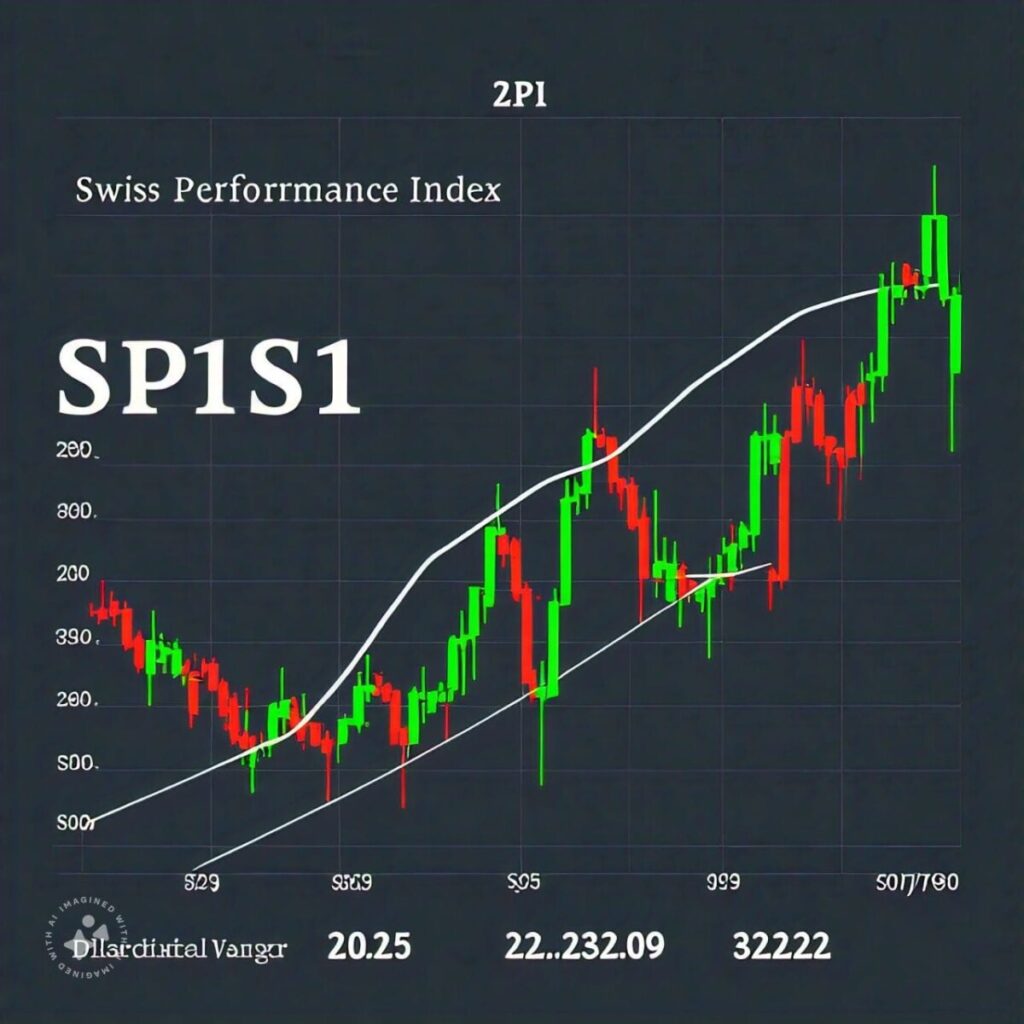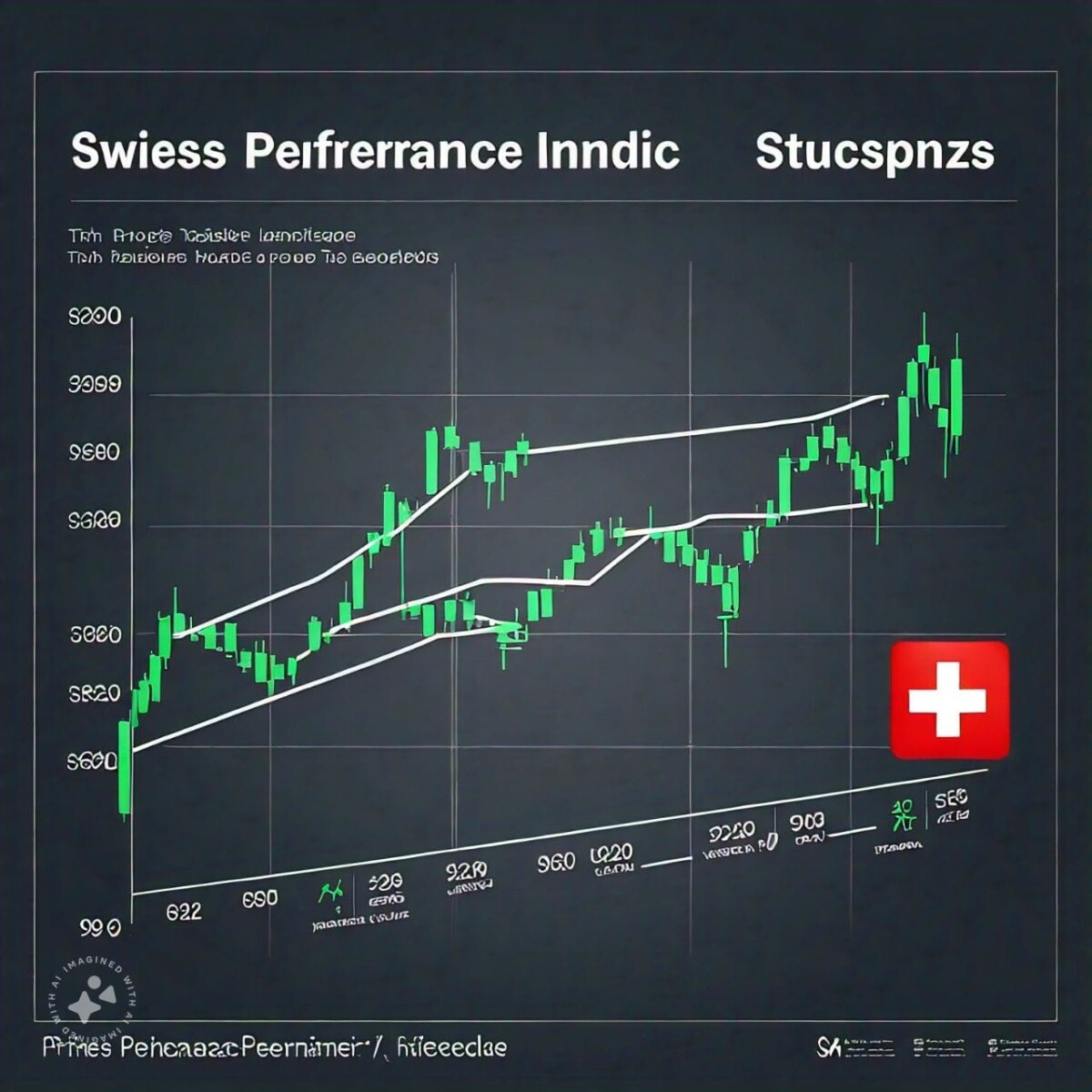Introduction to Swiss Performance Index (SPI)
The Swiss Performance Index (SPI) is a critical component of the Swiss financial market, serving as one of the most comprehensive stock market indices in Switzerland. Established in 1987, the SPI encompasses nearly all Swiss companies listed on the SIX Swiss Exchange, providing a broad representation of the Swiss equity market. Its significance lies in its extensive coverage and its role as a barometer for the overall performance of the Swiss economy.
The SPI is calculated using a free-float market capitalization-weighted methodology. This means that the index considers the market value of companies’ readily tradable shares, excluding those held by long-term investors. This approach ensures that the index reflects the shares available for public trading, offering a realistic picture of market dynamics. Companies included in the SPI range from large multinational corporations to smaller domestic firms, thereby capturing the diverse nature of the Swiss market.
The SPI’s role extends beyond merely tracking stock performance; it is pivotal for investors, analysts, and policymakers. By providing insights into the market trends and economic health, the SPI aids in investment decisions and strategic planning. Historical performance trends of the SPI reveal its resilience and growth potential. For instance, the index has demonstrated robust growth over the decades, punctuated by key milestones such as surpassing the 10,000-point mark in 2019.
Key milestones in the SPI’s history also include its response to global financial crises and economic fluctuations, reflecting its sensitivity to both domestic and international events. The index’s ability to recover and thrive post-crisis periods highlights its importance as a stable and reliable indicator of market performance. Through its comprehensive coverage and significant role in the financial market, the SPI remains an indispensable tool for understanding the dynamics of the Swiss economy.

Introduction to Swiss Market Index (SMI)
The Swiss Market Index (SMI), one of Switzerland’s most critical stock market indices, plays a pivotal role in the country’s financial landscape. Launched on June 30, 1988, the SMI serves as a benchmark for the Swiss equity market, offering investors a clear picture of the market’s performance. As a crucial indicator, the SMI encompasses the largest and most liquid companies listed on the SIX Swiss Exchange.
The calculation of the SMI follows a market-capitalization-weighted methodology, where the index’s value reflects the aggregate market value of its constituent companies. To qualify for inclusion in the SMI, a company must meet specific criteria, primarily revolving around market capitalization and liquidity. The index typically includes 20 of the largest Swiss stocks, representing approximately 80% of the total market capitalization on the SIX Swiss Exchange.
The SMI is heavily influenced by major sectors such as pharmaceuticals, financial services, and consumer goods, with prominent companies like Nestlé, Novartis, and Roche frequently featuring among its top constituents. This sectoral composition underscores the index’s reflection of the Swiss economy’s strengths and its global market integration.
When comparing the SMI to other global indices such as the Dow Jones Industrial Average (DJIA), FTSE 100, and DAX, it is evident that the SMI provides a unique perspective on the Swiss market, given its focus on a smaller, more concentrated group of high-capitalization firms. Historically, the SMI has demonstrated resilience and steady growth, making it an attractive option for investors seeking exposure to stable, high-quality companies.
Understanding the Swiss Market Index is crucial for investors aiming to navigate the Swiss financial market effectively. Its robust methodology, stringent inclusion criteria, and representation of key sectors provide a reliable gauge of Switzerland’s economic health and investment potential.
Comparing the SPI and SMI
The Swiss Performance Index (SPI) and the Swiss Market Index (SMI) are two pivotal benchmarks in the Swiss financial market, each serving distinct purposes and catering to different investor needs. Both indices offer valuable insights into the performance of Swiss equities, yet they differ significantly in composition, calculation methods, and market coverage.
The SPI is a broad-based index that encompasses nearly all Swiss companies listed on the SIX Swiss Exchange, covering around 230 stocks. Its comprehensive nature provides a holistic view of the Swiss equity market, making it a favorable choice for investors seeking diversified exposure. Conversely, the SMI is a more selective index, consisting of the 20 largest and most liquid Swiss companies. This concentration on blue-chip stocks offers a focused snapshot of the Swiss market’s leading firms.
Calculation methods also set these indices apart. The SPI is a total return index, meaning it includes dividends paid by constituent companies in its performance calculations. This feature is beneficial for investors interested in long-term growth and income generation. The SMI, however, is a price return index, which only considers price movements of the constituent stocks, excluding dividends. This focus on price movements appeals to investors prioritizing capital gains.
From an investment strategy perspective, the SPI’s broad coverage supports diversified investment approaches, reducing the risk associated with individual stock performance. On the other hand, the SMI’s concentration on large-cap stocks provides stability and lower volatility, attractive to conservative investors. However, this also means the SMI may be less responsive to smaller companies’ growth, potentially missing high-growth opportunities present in the SPI.
When considering advantages and disadvantages, investing in the SPI offers broader market exposure and the potential for higher total returns due to its inclusion of dividends. However, its extensive coverage might also mean higher volatility. The SMI, while offering stability and lower volatility, might limit growth potential due to its narrower focus.
Real-world examples illustrate these distinctions. For instance, during periods of market turbulence, the SMI’s blue-chip focus has historically shown resilience, while the SPI’s broader base has experienced more pronounced fluctuations. Conversely, during bull markets, the SPI’s extensive coverage has often outperformed the SMI due to the robust performance of mid and small-cap stocks.
Impact on Investors and the Swiss Economy
The Swiss Performance Index (SPI) and the Swiss Market Index (SMI) are integral to both investors and the broader Swiss economy. These indices serve as benchmarks that influence investment decisions, portfolio management, and financial planning for domestic and international investors. By tracking the performance of the most significant and liquid Swiss companies, the SPI and SMI offer a snapshot of the market’s health and potential growth areas.
For investors, the SPI and SMI provide essential insights into market trends and economic indicators. These indices help in assessing the performance of individual stocks relative to the market, enabling better-informed investment decisions. Portfolio managers use the SPI and SMI to diversify and balance portfolios, ensuring a mix of high-performing assets to mitigate risks. Financial planners also rely on these indices to tailor investment strategies that align with their clients’ goals and risk tolerance.
On a broader scale, the SPI and SMI reflect the economic vitality of Switzerland. A rising SMI or SPI often signals robust economic conditions, attracting more investment into Swiss equities. Conversely, a declining index could indicate economic downturns, prompting caution among investors. These indices are crucial for policymakers and economists who analyze them to gauge economic performance and craft informed economic policies.
Globally, the SPI and SMI hold substantial significance in the financial markets. Switzerland’s reputation for stability and economic resilience makes these indices attractive to international investors seeking safe havens. The performance of the SPI and SMI can influence global investment flows and perceptions of the Swiss market.
Recent developments in the SPI and SMI suggest a dynamic future. Technological advancements, regulatory changes, and global economic shifts continually reshape these indices. Investors must stay informed about these changes to navigate potential opportunities and risks effectively. The outlook for the SPI and SMI remains cautiously optimistic, with potential growth driven by sectors such as technology, pharmaceuticals, and finance.
